Copenhagen, Denmark—Could Copenhagen’s current energy transition be a source of new profitable business opportunities rather than a drag on the city’s economy? I spoke with senior business consultants at Rambøll, the venerable Danish engineering, design, and consulting company, to find out.
Rambøll was founded in Denmark in 1945 and employs over 13,000 people worldwide. Contrary to the concerns expressed by many conservative American business leaders about the economic impacts of climate-protection measures on business competitiveness, Rambøll experts say that new energy and environmental regulations actually create new business opportunities.

Neel Strøbaek, Director of Rambøll’s Environment and Planning Department.
Neel Strøbaek, Group Director of Rambøll’s Environment & Planning Department, explains that the idea of Copenhagen becoming carbon-neutral actually originated with Rambøll. “It must have been around 2007 when we were invited to participate in a big conference and exposition,” she said.
Søren Holm Johansen, now the Group Executive Director of Rambøll, came up with the idea of challenging the city to become carbon-neutral by 2025. The company made its proposal in a display in its conference booth. The rest is history.
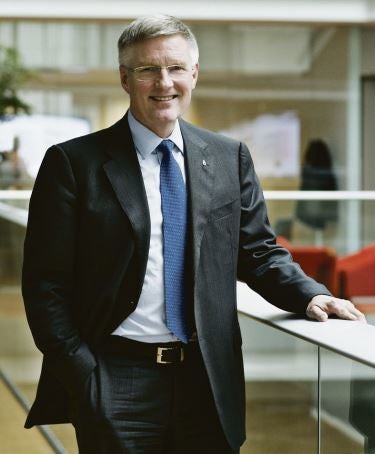
Søren Holm Johansen, Group Executive Director at Rambøll
Doing Well By Doing Good
Strategic thinking has always created a lot of business for the company, Strøbaek said, and it was clear from the start that Johansen’s idea could have major business implications.
Internationally as well as domestically, the energy sector, including power plant engineering, has been a major part of Rambøll’s business, and one of the company’s most profitable business areas. Rambøll, for example, had been the principal technical advisor to Copenhagen’s innovative district energy system for the past 30 years.
Unlike most other for-profit business and engineering consultants, Rambøll is operated by a private foundation. Thus the company and its consultants can stay committed to creating long-term, sustainable solutions for their customers, according to Strøbaek. That necessarily includes protecting the climate.
“We call ourselves sustainable society consultants,” Strøbaek said. “We have a very, very clear vision in Rambøll about doing projects that contribute to society so people and nature will flourish. . . .”
Rambøll is able to advocate for what it believes will be socially beneficial rather than hiring itself out to the highest bidder. Thanks to its operating foundation, it has no external shareholders and it can operate, in Strøbaek’s words, “completely independently.” “The whole Rambøll is owned by the Rambøll Foundation.”
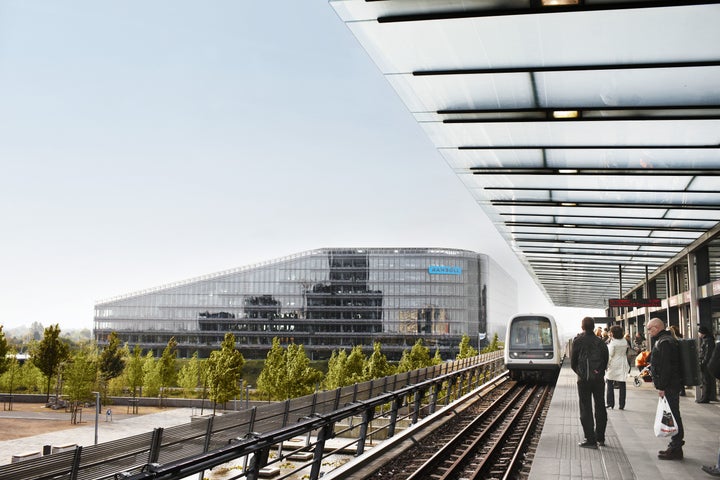
Rambøll’s headquarters in Copenhagen’s new Ørestaden neighborhood, seen from the Ørestad metro station
Strøbaek’s colleague, Søren Hansen, director of the company’s urban transportation planning and development, underscored the idea that the company takes principled positions. That’s why, explained Strøbaek, Søren Holm Johansen back in 2007 felt it was natural and appropriate to say, “Copenhagen, you have to do something [to protect the climate].
The city decided the concept was worthy of serious study and hired outside consultants. Rambøll helped calculate what was possible, and what should be done. The city then convened meetings with stakeholders.
Manufacturing firms, consultants, the municipal utility company, industry associations, and many local companies, large and small, met to discuss what the plan should accomplish and potential business opportunities.
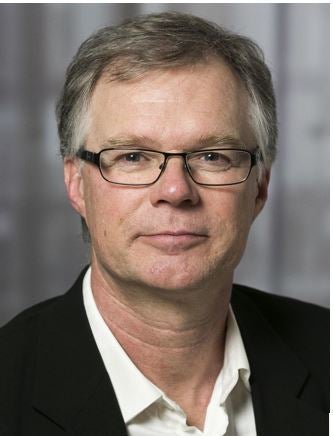
Søren Hansen, director of Rambøll’s urban transportation program.
Regulation actually drives new thinking and spurs action, Strøbaek observed, especially in infrastructure, energy, transportation, and housing. The imperative to create new energy-efficient, livable, smart cities demands the creation of new solutions.
Collateral Benefits
Beyond new commercial opportunities, other factors motivated the business community to support the city’s climate plan and energy transition. “It’s about attracting creative and innovative people. It’s around attracting talent,” Søren Hansen said
The city was in recession in the 1980s and talented people and families were moving out of the Copenhagen. “The capital of Denmark was actually in a very bad situation,” Hansen said.
But as Copenhagen focused on making its buildings more energy efficient, it also redeveloped sections of the city with world class architecture and plenty of leisure and recreational activities.
Not surprisingly, families and talent began returning to the city. “Companies are backing us on the city’s climate approach because they can see that it has an appeal for the talent[ed] and creative people they want to employ,” Hansen said.
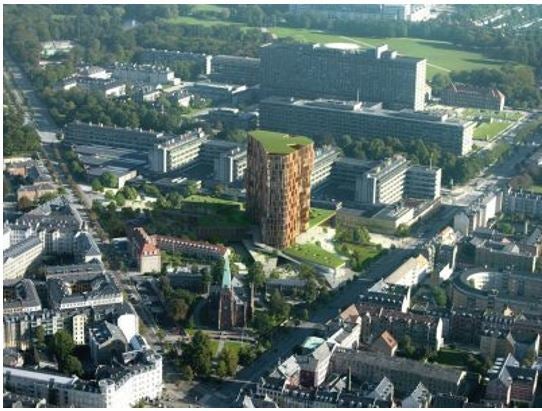
Modern buildings, some with green roofs, abutting neighborhood amenities.
In addition, as the government subsidized renewable energy, it created a whole new energy technology sector for Denmark. Within 15 years, Strøbaek said, the technology sector has come to rival the country’s agricultural sector, which had been its dominant industry for centuries. The wind energy business in particular has been good for Rambøll, especially offshore wind development.
Originally in the 1940s, one of the company’s two founders was famous for structurally advanced telecommunications towers. In the 1970s, modified versions were much in demand for offshore oil exploration platforms. Today, 65 percent of all offshore wind turbine foundations are Rambøll-designed.
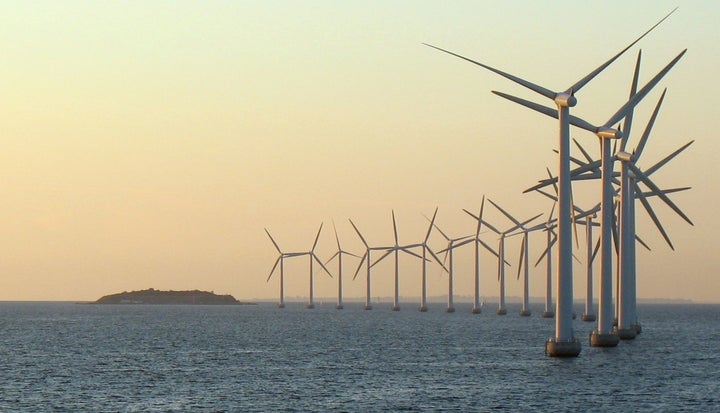
Offshore wind turbines just outside Copenhagen provide the city with green power
Broad Involvement in the Energy Transition
Rambøll has also recently been employed on the conversion of the city’s coal power plants to a state-of-the-art, high-efficiency biomass plant. “Danish power plants are among the most efficient power plants in the world,” Strøbaek remarked.
Rambøll is consulting now on all four major areas of the city’s climate plan, energy efficiency, renewable energy production, transportation, and municipal government action. (See Part 3 of this series, “The Four Pillars of Copenhagen’s Climate Plan.”). Some 2,000 Rambøll employees are active in the energy area.
The company is currently helping to plan and develop an entirely new Copenhagen district of 40,000 people called Nordhavn. “The ambition is to make it carbon-neutral and to be a producer of energy rather than a consumer,” Hansen said.
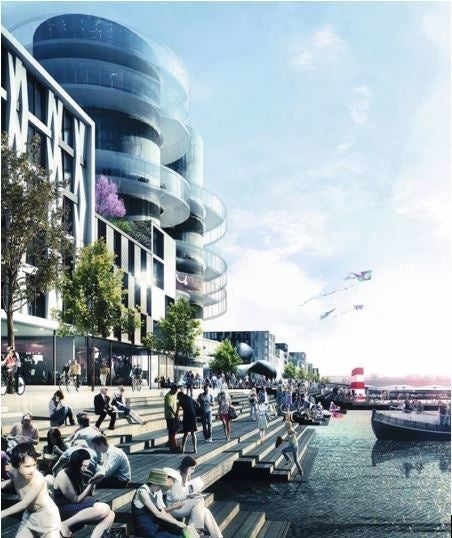
An artist’s rendering of energy efficient buildings in Copenhagen’s Nordhavn region.
Formerly a container hub near the port, Nordhavn’s creation as an urban district, “will definitely remove a lot of trucks from the center of Copenhagen,” Hansen said.
Rambøll is also actively helping the city find solutions to its transportation problems, which is the most challenging of the plan’s four focus area for the city. A Rambøll study within the past three years found that 85 percent of all the goods trucked around the city today could instead actually be distributed by bicycle, according to Hansen. “The potential is enormous,” he said.
Apart from engineering consultants, many other firms have benefited from Copenhagen’s ambitious energy transition. They include Danish manufacturers of heating, ventilating, and air conditioning equipment, such as Danfoss; producers of pumps, such as Grundfos; and window companies like Velux. “These companies have been stepping into the energy-efficiency agenda in a big way,” Strøbaek remarked.
In addition, renewable energy companies, like Vestas, have experienced enormous growth. Originally founded by small group of people in a remote blacksmith shop in Jutland, Denmark in 1979, Vestas has become one of the world’s leading wind turbine manufacturers with more than 50,000 turbines operating in 75 countries.
The lessons to be learned from the experience of Vestas and many other companies is that with some well-designed tax and pricing incentives and available credit, a well-crafted climate plan can be a boon to a city’s economy.
______________________________________
John J. Berger, PhD. (www.johnjberger.com) is an energy and environmental policy specialist who has produced ten books on climate, energy, and natural resource topics. He is the author of Climate Peril: The Intelligent Reader’s Guide to the Climate Crisis, and Climate Myths: The Campaign Against Climate Science, and is at work on a new book about climate solutions.
Follow John J. Berger on Twitter: www.twitter.com/johnjberger
